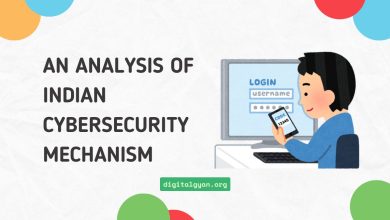Unlocking the Potential of Developers to Build a More Robust Security Team
The Changing Landscape of Cybersecurity
The cybersecurity landscape experiences ongoing changes, with malicious entities continuously improving their methods. Cyber threats have recently grown in size and complexity to previously unseen levels.
For example, in 2020, the Internet Crime Complaint Center (IC3) of the FBI recorded an astonishing 791,790 complaints, resulting in reported losses exceeding $4.2 billion.
From ransomware attacks crippling critical infrastructure to data breaches compromising sensitive information, the scope of cyber threats is expanding rapidly.
The Need for Proactive Security Measures
As cyber threats evolve, organizations must adopt a proactive approach to cybersecurity. Reactive strategies alone are no longer sufficient to safeguard against modern threats. Consider the SolarWinds breach, where attackers infiltrated a widely used software vendor, Orion, compromising thousands of organizations.
This incident emphasized the importance of proactive security measures like continuous monitoring, threat hunting, and robust encryption methods such as the Advanced Encryption Standard (AES) to detect and respond to threats before they cause significant damage.
The Integration of Developers Into Security Efforts
To address the evolving threat landscape and the need for proactive security, organizations are increasingly recognizing the pivotal role developers can play. By integrating developers into security efforts, companies can benefit from their expertise in identifying vulnerabilities and writing secure code.
For example, a leading financial institution can implement a “security champions” program, where developers are trained to identify and mitigate security issues in their code.
As a result, the number of security vulnerabilities will decrease, demonstrating the tangible impact of developer involvement in security efforts. This cost-effective integration aligns development and data security goals for a more resilient and secure digital environment.
Bridging the Gap: Developers and Security Teams
Traditional Divide Between Developers and Security Teams
Historically, there has been a significant gap between developers and security teams. Developers often prioritize delivering software quickly, while security teams prioritize identifying and mitigating risks.
This disconnect can result in security issues going unresolved or being addressed too late.
Collaboration as the Key to Success
To bridge this divide, collaboration is essential. DevOps and DevSecOps methodologies emphasize breaking down silos between development, operations, and security teams. By fostering collaboration, organizations can ensure that security considerations are integrated throughout development.
Benefits of Developer Involvement in Security
The benefits of involving developers in security efforts are substantial. When developers actively participate in security, they gain a deeper understanding of potential vulnerabilities and threats. This knowledge empowers them to write more secure code from the outset, reducing the likelihood of introducing vulnerabilities and contributing to effective developer-driven security.
Integrating developers into security efforts ensures faster detection and remediation of security issues, saving organizations both time and resources. Incorporating developers also promotes a culture of shared security responsibility – rather than seeing security teams take sole ownership – which ultimately creates stronger, more resilient security for organisations in today’s evolving threat environment.
Empowering Developers for Security Excellence
Security Awareness and Training Programs
Empowering developers for security excellence starts with education and awareness. Security awareness and training programs are instrumental in equipping developers with the knowledge and skills needed to identify and mitigate security threats.
For instance, a leading software company can initiate a comprehensive security training program for its development teams, covering secure coding practices and threat modelling topics.
Incorporating Security Into the Development Process
Security should be integrated seamlessly into the development process to achieve excellence. This involves implementing security checks and measures at every stage of software development, from design to deployment.
Additionally, organizations can leverage advanced tools like SOC 2 compliance automation to streamline the compliance process and ensure that security standards are met consistently.”
For instance, a healthcare institution can integrate automated security testing into its development pipeline. This will allow vulnerabilities to be detected and remediated early, reducing the likelihood of costly data breaches.
Tools and Technologies for Developer-Friendly Security
Developers benefit significantly from tools and technologies that facilitate secure coding. Using developer-friendly security tools, such as static analysis and dynamic scanning tools, simplifies identifying and remediating vulnerabilities.
For example, a financial services company incorporated a secure coding platform into its development environment. This platform provided real-time feedback to developers, enabling them to address security issues immediately.
Challenges of Building a Security Team
Resistance to Change From Developers
One of the primary challenges in integrating developers into security efforts is the resistance to change. Developers often prioritize rapid code delivery and may perceive security measures as hindrances. To address this, organizations can implement gradual changes and highlight security benefits.
Balancing Security and Development Timelines
Balancing security requirements with tight development timelines is a common struggle. Agile and DevOps methodologies aim for rapid iterations, potentially sidelining security. To overcome this, organizations can adopt automated security testing tools that seamlessly fit into the development pipeline.
Conclusion
Due to an ever-evolving threat landscape in cybersecurity, an agile and collaborative approach must be taken when protecting digital assets. Although traditionally seen as separate from security teams, developers play a powerful role in strengthening an organization’s defenses.
Organizations can harness this capacity and establish more resilient security by arming developers with essential tools, knowledge, and fostering an encouraging cultural environment.
Progress indicates the necessity of adopting an integrated and proactive strategy involving developers and security teams that works cohesively to address ever-evolved cyberthreats.
Together we can foresee a future where security excellence becomes not simply an elusive goal but instead part of our collective vision, making the digital environment safer for all.

